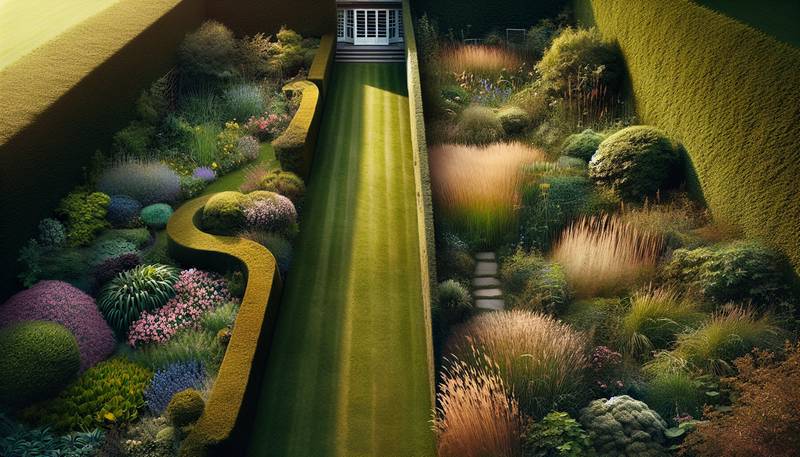Cultivating Chaos: Embracing Wildness in Landscape Design

Setting the StageMy fellow horticulturalists, garden enthusiasts, and lovers of all things verdant, I come to you with a call to arms, a plea to abandon your well-trodden landscaping paths and enter into the realm of wild, untamed chaos. You, who have labored under the tyranny of perfectly manicured lawns and meticulously arranged flower beds, I beseech you to break free from the straightjacket of tradition and embrace a new world of landscape design that celebrates the wildness and beauty of nature in its truest form.The Illusion of ControlFor aeons, humankind has sought to tame Mother Earth, to bend her to our will and force her into the unnatural confines of our design. But have we not seen the consequences of this hubris – the creeping sprawl of urban development, the loss of habitat and biodiversity, the soul-crushing sameness of suburban lawns? It is time for a different approach, one that honors the inherent chaos of the natural world and seeks to create a harmonious balance between our desires and the environment's own intricate and unpredictable beauty.Chaos Theory in the GardenEnter chaos theory, that beguiling branch of mathematics that seeks to understand the behavior of complex, dynamic systems – like the weather, or the stock market, or a particularly unruly stand of bamboo. In the context of landscape design, chaos theory provides a framework for incorporating wildness and spontaneity into our gardens, creating spaces that are at once dynamic, captivating, and ecologically vibrant.Seeds of Change: Practical Steps for Embracing WildnessSo how does one go about cultivating chaos in their own backyard? Fear not, for I shall guide you through the process with the following practical steps: - Rethink your plant palette: Begin by selecting plants that celebrate the wild and untamed qualities of their native habitats. Instead of planting a row of identical shrubs, try a diverse mix of native species that will attract pollinators and other wildlife, and provide a riot of color, texture, and form throughout the seasons.
- Embrace imperfection: Toss aside the oppressive mantle of the perfectly pruned garden and allow plants to grow and interact with one another as they would in the wild. This means letting the occasional weed sprout up, allowing some plants to grow taller or wider than you might have planned, and generally giving nature a bit more leeway in your landscape.
- Go with the flow: Incorporate natural elements like rock outcroppings, fallen trees, and water features into your garden design, using them as focal points and inspiration for surrounding plantings. This not only adds visual interest, but also creates important habitat for wildlife and contributes to a sense of wildness and authenticity.
- Create habitat: Build homes for the creatures that share our world by incorporating nesting boxes, brush piles, and other habitat features into your garden. Attracting birds, amphibians, and other wildlife not only adds life and movement to your landscape, but also contributes to the overall health of the ecosystem by providing natural pest control and promoting biodiversity.
But Wait, There's MoreWhile chaos theory provides a tantalizing glimpse into the potential of wildness in landscape design, it is by no means the only approach to breaking free from the shackles of convention. There are myriad other philosophies, styles, and techniques that can help you create a garden that is at once wild, beautiful, and uniquely your own.Emulating Nature's DesignOne such approach is to look to the natural world itself for inspiration, and seek to recreate the structure and complexity of natural ecosystems in your landscape. This can mean mimicking the layered structure of a forest – with tall canopy trees, understory shrubs, and groundcovers – or the diverse plant communities found in a meadow or wetland.Ditching the LawnAnother radical act of landscape rebellion is to simply abandon the lawn altogether, and replace it with a lush, varied tapestry of native plants, ornamental grasses, and meadow flowers. This not only creates a visually stunning and ecologically rich space, but also reduces the need for water, fertilizer, and other inputs associated with maintaining a traditional lawn.Conclusion: The Wild Frontier of Landscape DesignSo, my fellow green-thumbed adventurers, I urge you to throw off the yoke of traditional landscape design and embark on a journey into the wild, untamed world of chaos and complexity that awaits just outside your doorstep. Embrace the rambunctious beauty of nature, and forge a new path toward a future of sustainable, ecologically vibrant gardens that not only nourish our souls, but also support the myriad other species that share our planet. Let us cultivate chaos in our landscapes and, in doing so, create a greener, wilder, and more beautiful world for all.
|
|







